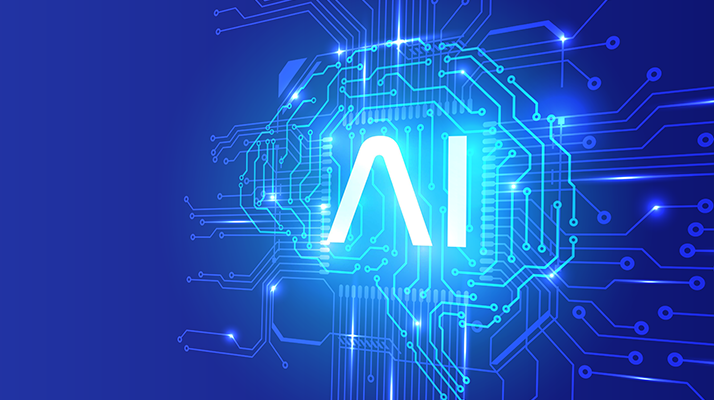But despite a continued and renewed urgency around AI adoption and implementation, the path ahead still looks uncertain. Leadership teams struggle to align on next steps and strategies and, as a result, talent strategies are not keeping up with the pace of disruption . But perhaps most worrying is that they are currently overlooking – and failing to understand – the human element of AI disruption. On the one hand, 54% of leaders in 2025 say their company will employ fewer people in five years' time because of AI, and 46% of companies have already reduced their employee headcount. In parallel, only 42% of business leaders say their leadership team understands the business impact of losing experienced talent and the opportunities for redeploying staff displaced by AI.
While business leaders rush to tackle the technological challenges of AI, they say elements like automation, business uncertainty and skills scarcity are likely to become less of a priority in the next five years. Considering those three points are front of mind for global workers and that they won’t be going anywhere any time soon, there is a clear mismatch between leader and worker priorities, resulting in slow AI progress and expectations.
This presents a golden opportunity for companies to rebalance their talent and technology strategies t o bridge the divide between AI expectations and reality. To do this, companies must equip leaders, implement a responsible AI framework and invest in data insights to crack the skills gridlock. In parallel, they must better communicate priorities to workers, providing them with a career path through the AI disruption and upskilling them accordingly.
Urgency without unity
Currently, one of the main barriers to keeping pace with AI disruption is a lack of unity amongst the C-Suite . In fact, over half (53%) of CEOs reported that their leadership team struggles to align on AI and talent strategies in a timely manner. More specifically, our research found disagreement on the biggest barrier to progressing talent strategies. While CHROs point to a lack of internal skills and resources as the main obstacle, for CEOs the key stumbling block tends to be a lack of perceived ROI or commercial interest. Meanwhile, Chief Operating Officers identify a lack of reliable IT solutions and data infrastructure as the tallest hurdle. This disparity and lack of focus makes it difficult to prioritise solutions.
All of this indicates that decision-makers are struggling to keep up with the realities of AI technology as it continues to evolve at pace. This may explain why a third of leaders say they still don’t have a corporate AI policy and that leader confidence in AI implementation has dropped 11 percentage points year-on-year.
Unfair expectations
Even though leaders themselves are unclear on how to proceed with AI and how it will impact their business and their people, organisations have high expectations of employees. Over half (60%) say that workers need to adapt to the realities of AI by updating their skills, roles and responsibilities.
Building a future-ready business is about balancing human potential with technological promise. While the future of work is AI-driven, there is no talent strategy without people. Companies must invest in tech and talent simultaneously, but as it stands, the balance is off. The number one barrier to accelerating digital transformation in 2025 is a lack of in-house technology talent, digital competence and skills, according to 40% of leaders surveyed in 2025 (up from 19% in 2024). And while digital transformation can enhance many facets of an organisation, we found that many companies didn’t prioritise using technology to help employees to grow and advance. In fact, only 33% of companies are investing in a solid data infrastructure for talent development.
What’s more, year-on-year progress on training and guidance on how to use AI has been slow. The Adecco Group’s latest Global Workforce of the Future research revealed that employer commitment to upskilling and development was stalling in 2024; only 25% of workers have completed training on how to use AI at work.
Leaders have a chance in 2025 to course correct. A small cohort of adaptable organisations is building AI capabilities, facilitating internal opportunities, developing skills and strengthening leadership. These future-ready organisations understand the need for tech to underpin talent . The majority of future-ready organisations (69%) say their company has an effective forecasting strategy for potential skill gaps and 68% report increasingly using AI in development programmes. On both fronts, this is well above the global average of 49% and 52%, respectively. As a result, 70% of future-ready organisations state that the use of AI has significantly improved their talent strategy over the past 12 months – versus a global average of 53%.
3 steps to bridge the AI expectation-versus-reality divide
So how can organisations worldwide rebalance their talent and technology strategies? We have identified a three-step approach:
First, organisations must invest in data to crack the skills gridlock. Leaders cite the pace of change as the key barrier to building skills and adapting their talent, but less than half (49%) have an effective forecasting strategy for potential skill gaps.
Second, they must empower leaders to understand AI and align on strategic priorities so they can set realistic expectations for the rest of the workforce. This also means holding leaders accountable and incentivising them to develop their own AI knowledge and skills.
The third and most important step is the implementation of a responsible AI framework. Companies with a responsible approach to AI demonstrate a commitment to their workers by setting clear expectations, committing to the development of AI skills and creating accountability. The results speak for themselves. Our research shows that workers in companies with responsible AI frameworks have higher levels of tech literacy and are better able to adapt to new AI tools than in other organisations, enabling them to meet leaders’ AI expectations. In parallel, leadership teams in these companies have a better handle of AI-related impacts and, overall, these companies are far more likely to report that AI has positively impacted the talent strategy over the last year.
A responsible AI framework is key to building a human-centric, tech-enabled talent strategy that supports a future-ready organisation. To find out more about how organisations can apply these findings in practice and keep pace with disruption, download Leading in the age of AI: Expectations versus reality.



